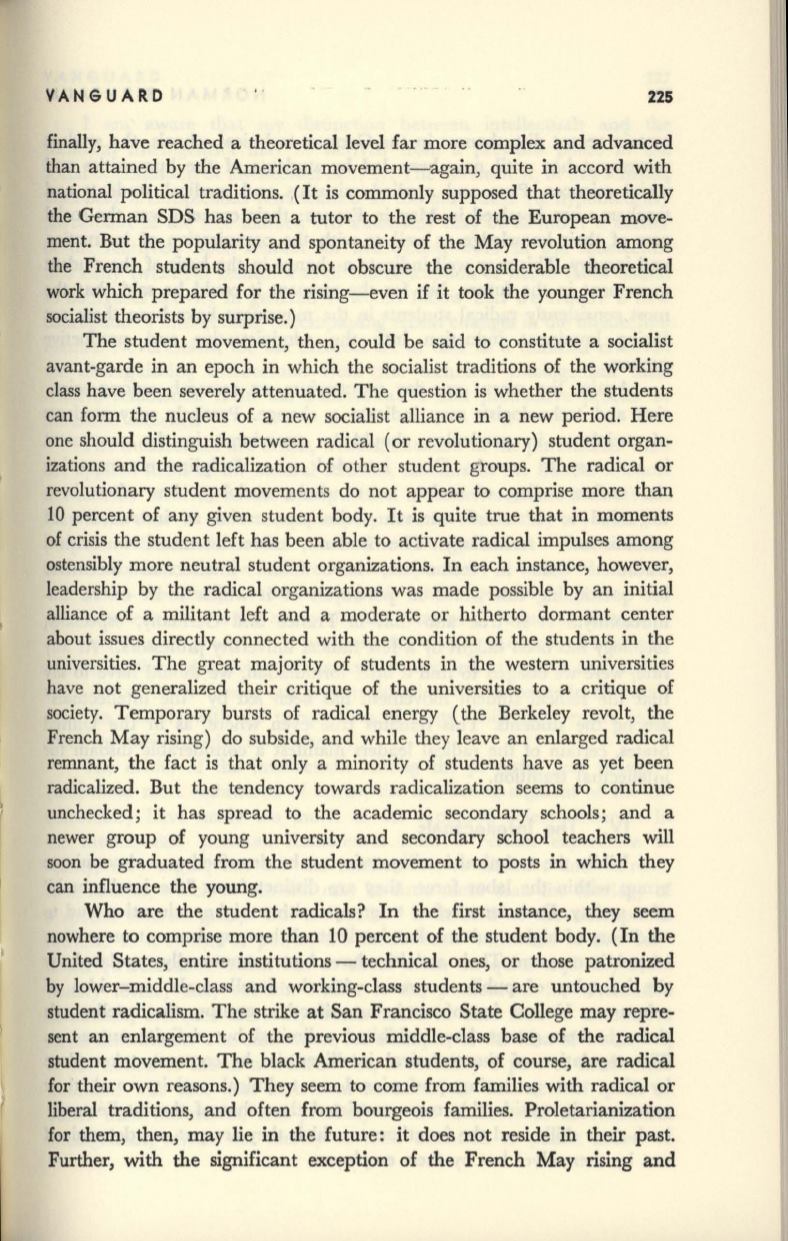
VANGUARD
225
finally, have reached a theoretical level far more complex and advanced
than attained by the American movement--again, quite in accord with
national political traditions. (It is commonly supposed that theoretically
the German SDS has been a tutor to the rest of the European move–
ment. But the popularity and spontaneity of the May revolution among
the French students should not obscure the considerable theoretical
work which prepared for the rising-even if it took the younger French
socialist theorists by surprise.)
The student movement, then, could be said to constitute a socialist
avant-garde in an epoch in which the socialist traditions of the working
class have been severely attenuated. The question is whether the students
can form the nucleus of a new socialist alliance in a new period. Here
one should distinguish between radical (or revolutionary) student organ–
izations and the radicalization of other student groups. The radical or
revolutionary student movements do not appear
to
comprise more than
10 percent of any given student body. It is quite true that in moments
of crisis the student left has been able to activate radical impulses among
ostensibly more neutral student organizations. In each instance, however,
leadership by the radical organizations was made possible by an initial
alliance of a militant left and a moderate or hitherto dormant center
about issues directly connected with the condition of the students in the
universities. The great majority of students in the western universities
have not generalized their critique of the universities to a critique of
society. Temporary bursts of radical energy (the Berkeley revolt, the
French May rising) do subside, and while they leave an enlarged radical
remnant, the fact is that only a minority of students have as yet been
radicalized. But the tendency towards radicalization seems to continue
unchecked; it has spread to the academic secondary schools; and a
newer group of young university and secondary school teachers will
soon be graduated from the student movement to posts in which they
can influence the young.
Who are the student radicals? In the first instance, they seem
nowhere to comprise more than 10 percent of the student body. (In the
United States, entire institutions - technical ones, or those patronized
by lower-middle-class and working-class students - are untouched by
student radicalism. The strike at San Francisco State College may repre–
sent an enlargement of the previous middle-class base of the radical
student movement. The black American students, of course, are radical
for their own reasons.) They seem to come from families with radical or
liberal traditions, and often from bourgeois families. Proletarianization
for them, then, may lie in the future: it does not reside in their past.
Further, with the significant exception of the French May rising and


